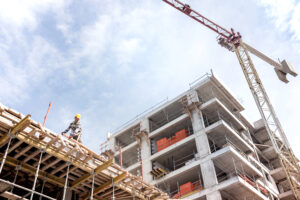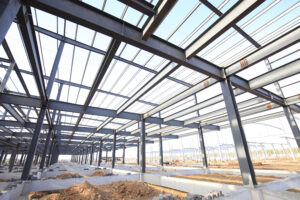
McKinsey Report Identifies Levers to Building Decarbonization, Code Council Solutions Poised to Facilitate Achievement
McKinsey’s study looks at buildings across their lifecycle, identifying opportunities to reduce the GHG intensity of materials and the GHGs associated with the operation of buildings.
The impact buildings have on the global environment is substantial. According to the Global Alliance for Buildings and Construction, buildings contribute to about 40 percent of the global greenhouse gas (GHG) emissions. To help reduce these impacts, many policymakers and building industry members have set specific environmental goals—many striving for the decarbonization of new buildings by 2030.
Of course, the big question is how we can make this happen.
Accelerating Decarbonization in the Built Environment
Global consultancy, McKinsey, identified over 1,000 potential levers to reduce building and infrastructure-related emissions in their study Building value by decarbonizing the built environment: Uncovering how decarbonization can create unprecedented value.
From these levers, they identified 22 that can reduce operational emissions by up to 90 percent and embodied emissions by up to 60 percent if implemented at scale in the next five to ten years. Some of these measures are cost-effective today, while others can be cost-effective or marginally more expensive by 2030 if scaled.
Deploying these levers requires the development of an ecosystem of what McKinsey terms “solutions,” “solution providers” and “solution enablers”.
The International Code Council family of solutions provides tools across the entire decarbonization ecosystem to help achieve decarbonization goals.

Decarbonization Solutions Found Through the McKinsey Report
McKinsey’s study looks at buildings across their lifecycle, identifying opportunities to reduce the GHG intensity of materials (or embodied GHGs) and the GHGs associated with the operation of buildings (or operational GHGs).
At the individual project level, understanding the impacts of design and material choices on operations can be complex. Also, reporting on the lifecycle impact of buildings is inconsistent. To help in this regard the Code Council and ASHRAE are developing ASHRAE/ICC Standard 240.
Certified Green Materials and Solutions
Many of McKinsey’s identified solutions focus on reducing the impact of materials and components used in buildings including cement and concrete, steel, insulation and wood, and identifies the need for certified green materials and solutions.
Verifying the environmental attributes of these materials while also assuring they are still fit for purpose is essential. The ICC Evaluation Service (ICC-ES) has the unique capability to do just that. Through its environmental verification program, including serving as an ANAB accredited Type III Environmental Product Declaration (EPD) Program Operator, ICC-ES assures environmental claims are accurate. At the same time, through its product evaluation and listing activities, ICC-ES verifies other performance requirements including structural performance as required by building codes.
Offsite Construction
Further leveraging offsite construction and its ability to reduce construction waste is another solution. The Code Council facilitates the safe and effective deployment of offsite construction with tools from across the organization.
The Code Council and Modular Building Institute developed ICC/MBI Standards 1200 and 1205 to help bring consistency to the design, manufacture and regulation of offsite construction. Additional offsite construction standards and guidelines are currently in development.
Code Council Training provides educational resources on off-site construction including a new Credential of Learning Achievement. ICC NTA is the industry leader in providing plan review and factory inspections for the offsite construction industry. ICC-ES and the International Accreditation Service (IAS) also provide conformity assessment services that support off-site construction.

Learn more about the Code Council’s offsite construction activities, here.
Regulatory and Policy Frameworks
Finally, while the study focuses on the economic drivers of change, it notes that regulatory and policy frameworks could help push implementation further and support scaling of the identified solutions. Again, tools from the Code Council play an important role.
The International Energy Conservation Code® (IECC), International Green Construction Code® (IgCC) and the ICC 700-2020 National Green Building Standard® provide policy tools that support decarbonization and the delivery of energy-efficient buildings. Since 2009, the IECC has delivered over 700 million metric tons of avoided CO2 emissions—the annual emissions of 187 coal-powered power plants or taking 155 million cars off the road for a year. Chapter 9 of the IgCC provides tools to reduce the impacts of materials through the use of EPDs and life cycle assessment.
Additional energy efficiency and GHG reduction resources including guidance on electric vehicle charging infrastructure, energy storage systems, and the effective use of building performance standards is also available.
Learn more about the Code Council’s current and future activities around building decarbonization in Decarbonization of The Built Environment: Solutions from The International Code Council.








